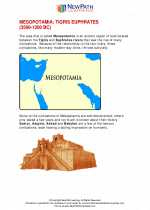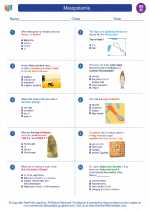Mesopotamia
Mesopotamia was an ancient region located in the eastern Mediterranean, in the area of present-day Iraq and northeastern Syria. It is often referred to as the "cradle of civilization" due to its significant contributions to the development of human society.
Key Facts
- Location: Modern-day Iraq and northeastern Syria
- Time Period: Approximately 3500 BCE to 500 BCE
- Significance: Earliest known civilization, development of writing, laws, and urban centers
Civilizations in Mesopotamia
Mesopotamia was home to several ancient civilizations, including the Sumerians, Akkadians, Babylonians, and Assyrians. These civilizations made significant advancements in areas such as agriculture, architecture, and governance.
Key Achievements
Some of the key achievements of Mesopotamian civilizations include:
- Development of writing using cuneiform script
- Creation of the first known legal code, such as the Code of Hammurabi
- Advancements in mathematics and astronomy
- Construction of impressive ziggurats and urban centers
Study Tips
When studying Mesopotamia, it's important to focus on the following areas:
- Understanding the geography of the region and its impact on early civilizations
- Exploring the contributions of key Mesopotamian civilizations, such as the Sumerians and Babylonians
- Examining the development of writing and its significance for record-keeping and communication
- Analyzing the Code of Hammurabi and its impact on early legal systems
By focusing on these key areas, you can gain a deeper understanding of the significance of Mesopotamia in shaping early human history.
[Mesopotamia] Related Worksheets and Study Guides:
.◂Social Studies Worksheets and Study Guides Eighth Grade. Mesopotamia

 Worksheet/Answer key
Worksheet/Answer key
 Worksheet/Answer key
Worksheet/Answer key
 Worksheet/Answer key
Worksheet/Answer key
